Amazingly, country roads exist even within sight of the Empire State Building which towers less than twenty miles from my home in Northern New Jersey. One Sunday, while meandering about with no particular place to go, I stumbled upon a surprisingly bucolic tangle of local wiggle roads. The driving delight they afforded momentarily sparked a gnawing distress at the joy to be lost with the coming age of automated cars. I quickly dismissed the thought opting for feigned ignorance and the associated bliss.
Navigating through a one-lane railroad underpass delivered me to a truly rural time capsule. Before me stood a farm with, what would prove to be, two centuries of history and the resting place for a century old chain-drive Mack truck.
That is how I came to meet Jim Van Houten of Van Houten Farms in Pearl River, New York.
Hundred-Year old Bulldog, Beloved but doomed?
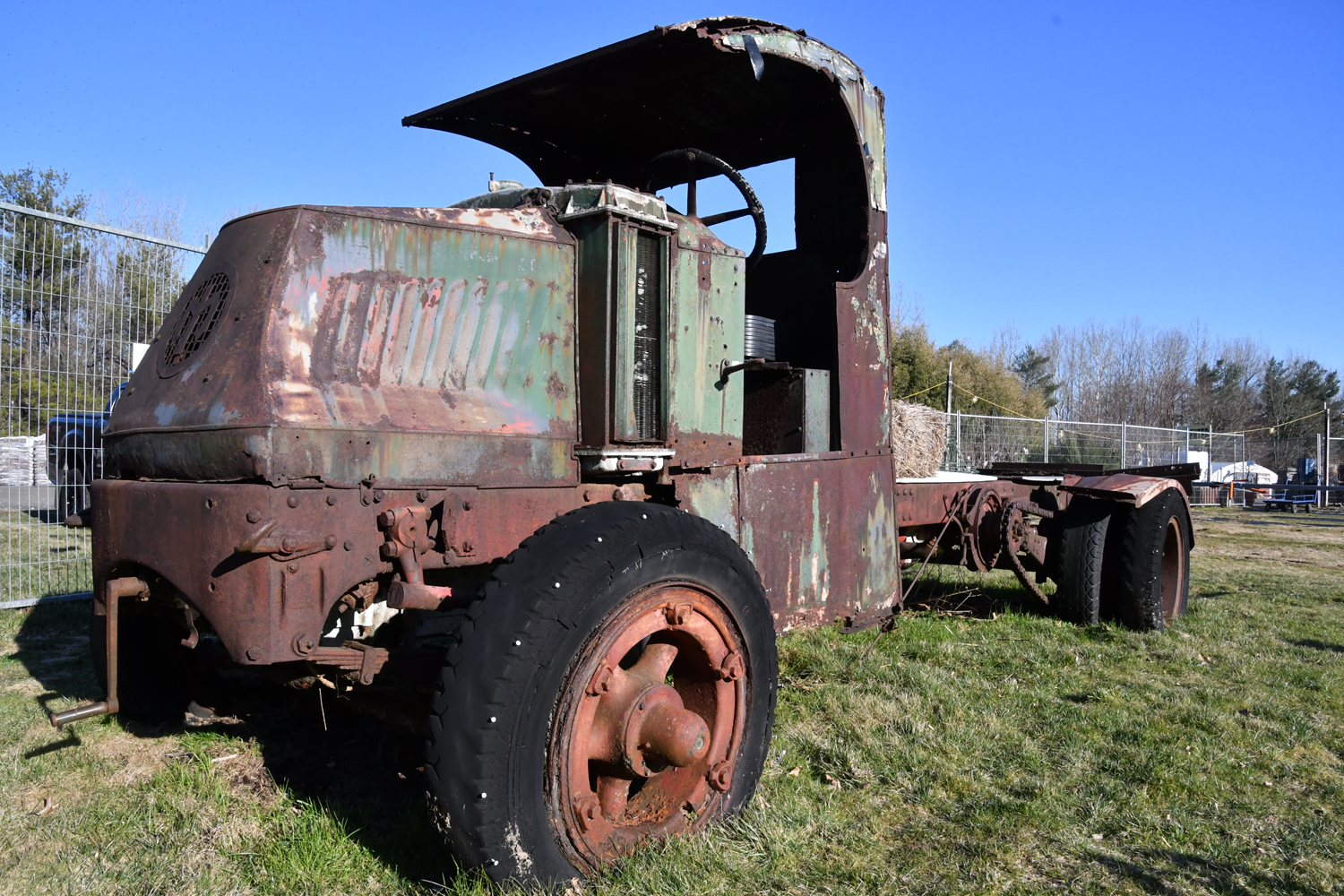
Van Houten’s 1925 Mack AC
Jim Van Houten’s 1925 Mack AC, while standing tall and proud displays deep scars and brutal decay from the ravages of decades spent untended though not unloved. Certainly no one loves that truck more than Jim. As Jim gazes at the truck he radiates a sense of wistful resignation. An acknowledgement of forces at work and the meaning of dust to dust.
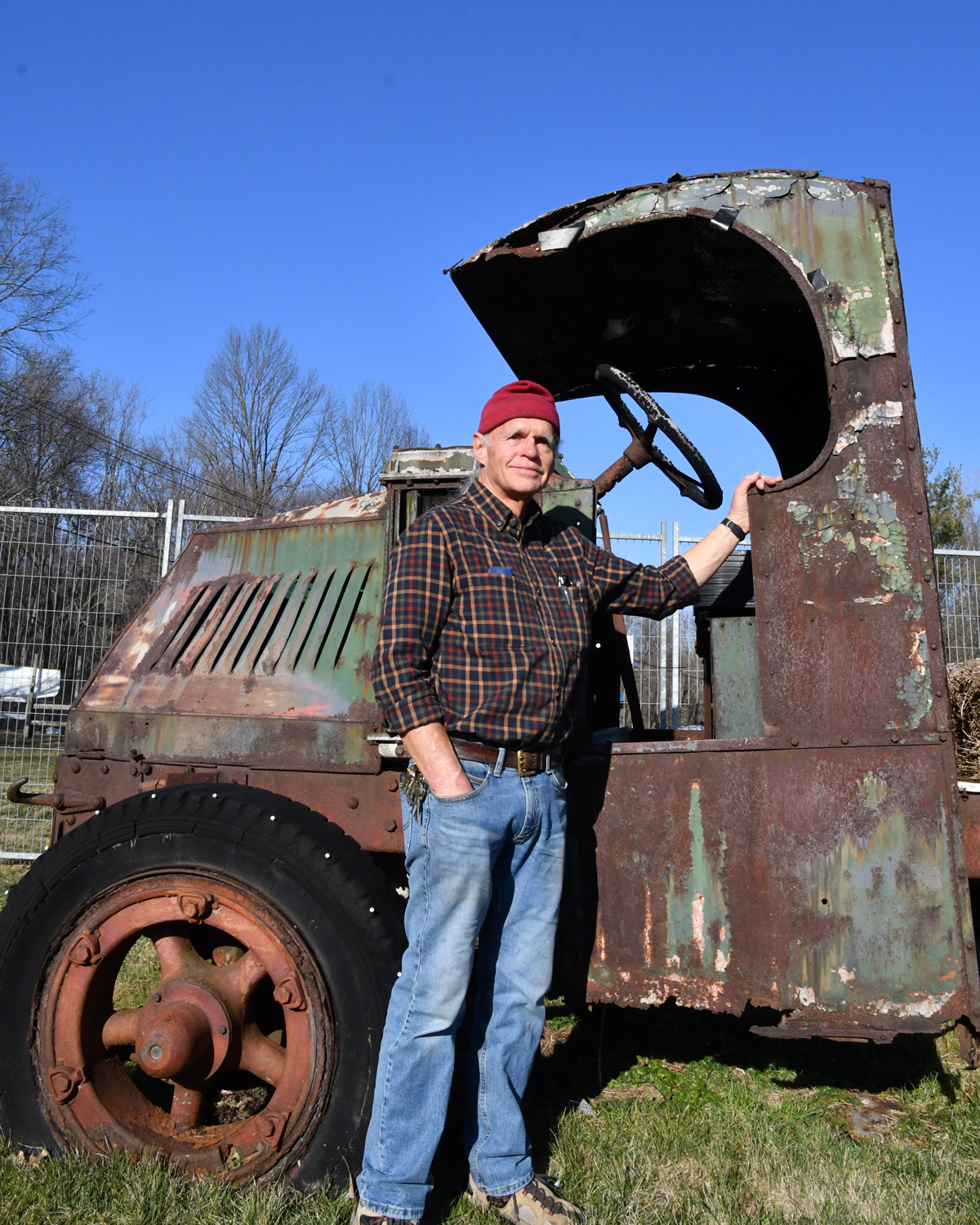
Jim Van Houten with 1925 Mack AC
Jim’s trim physique and forthright demeanor belie his 78-years. While every inch a farmer, Jim arrived at his life’s work on the farm following a few years spent in corporate America. His background includes a B.S. in agriculture and an MBA, both from Cornell.
Jim says, “Today there are only three farms left in this county. Ours is one of them.” However, the pressures to keep his farm alive offer an ever present challenge. Jim says, “While individuals seem to love visiting the local farm, local governments appear incapable of appreciating the farm’s value to a community.” Town bureaucrats frequently seem intent on turning the farm into a prize for some large developer to exploit.
Much of that which Jim holds dear seems under attack, often by what feels like inexorable forces. Maybe that 100-year old truck Jim loves stands as a metaphor for the 200-year old farm that he holds so dear.
Jim possesses a profound appreciation and respect for the farm and the land that holds much family history dating back to 1812. He considers that Mack as a part of that family saga. Its kind certainly represents a vehicle that played an important role in America’s success during the early 20th century in both peace and war.
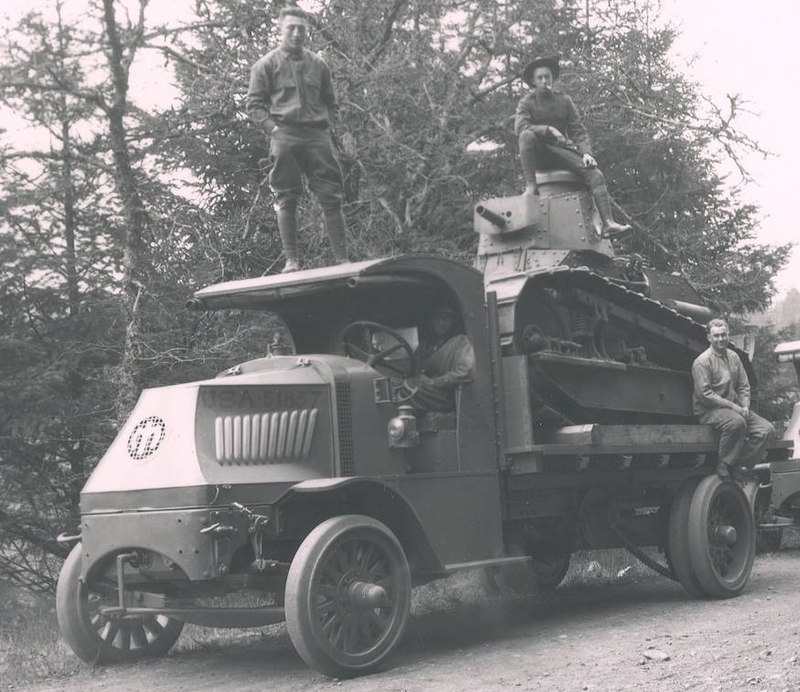
The Mack AC resides in the pantheon of important vehicles based on its decades of service as a rugged, reliable and tireless workhorse capable of successfully transporting loads and performing jobs where other trucks failed. It earned legendary respect on the WWI battlefields of Europe where it delivered medical aid, vital supplies and critical replacements despite deep mud, horribly rutted roads and shell-pocked battlefields that barred the efforts of other trucks.
According to the Mack Museum, during World War 1 Mack shipped over 2,000 trucks to Great Britain. The story goes that Mack got its “Bulldog” name from the British soldiers with whom the Mack trucks had earned enormous respect for their ability to do what other trucks could not. When the British troops faced a difficult truck challenge, the cry would be, “Aye, send in the Mack bulldogs.” Mack management loved the name and embraced it. The rest is marketing history. The Mack AC enjoys the respect and love of not just Jim but a global population who it loyally served for over a half-century.
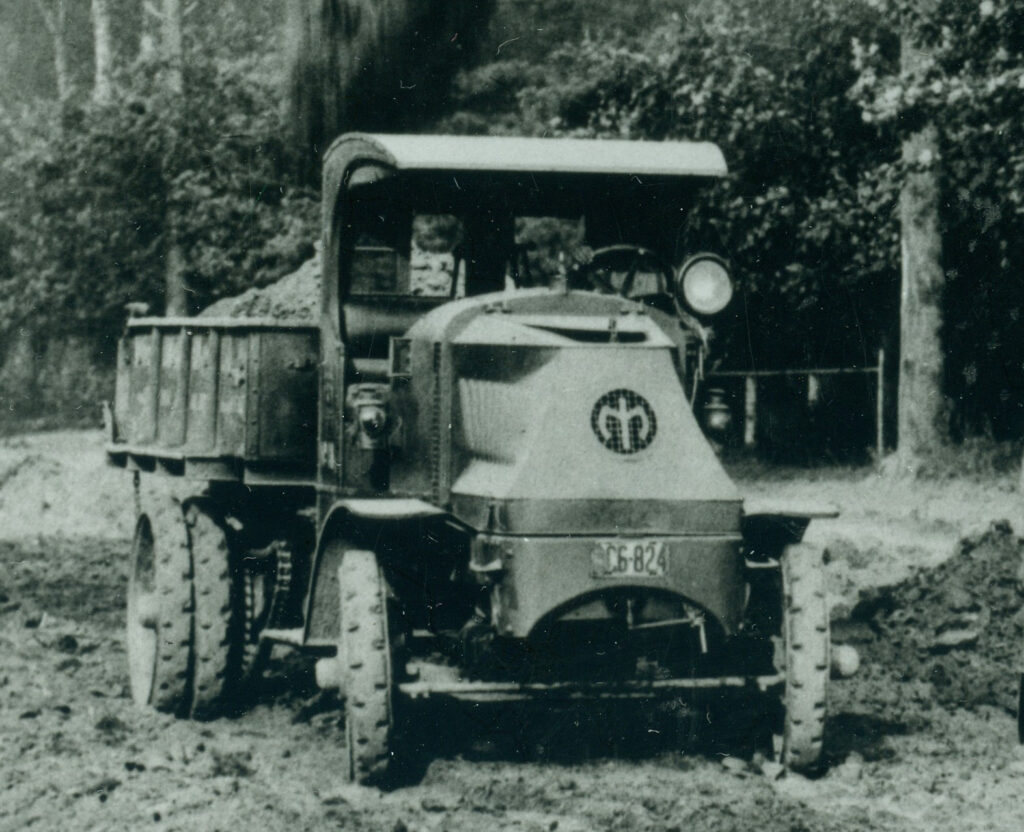
Brought to the market in 1916, the Mack AC a two-wheel drive, two-axle truck had, for then, a husky 4-cylinder gasoline engine delivering 69-horsepower through a three-speed manual transmission. In an age of horses, a rugged vehicle that could dependably carry up to seven and one-half tons on solid rubber tires at speeds approaching 20 mph represented a quantum leap. The Mack AC’s legendary chassis earned its reputation for rugged endurance with a pressed chrome-nickel steel construction heat treated for durability. In the early 20th century the Mack AC reigned as the big dog. Out of production in the 1930s, Mack ACs could still be seen on the job in the 1950s, even the 1960s.
Jim’s truck began its service under the ownership of a fellow farmer and family friend of his grandfather. Back in the 1930s his grandfather would take the Mack loaded with corn into wholesale farmers markets in New York City much as Jim, today, still brings produce into the Union Square Farmers Market. Silent and still, the old Mack AC witnesses Jim in his 21st century truck whenever he departs for the city.
At some point in the 1940s the friend had bought property upstate. By the 1950s Jim’s dad began working the land the friend left behind. Jim says, “I remember going to that farm in the 1950s and seeing the Mack sitting in the old barn.”
Some years later in the 1960s Jim’s dad traded an old John Deere Model A tractor for the 1925 Mack AC and all the family history it contained. With quizzical reflection Jim says, “Then we let the Mack sit there unmoved for more years.” Finally in the early 70s Jim with college and his corporate experience behind him returned to run the Van Houten farm. With that, the resurrection of history and the old Mack AC appeared to commence.
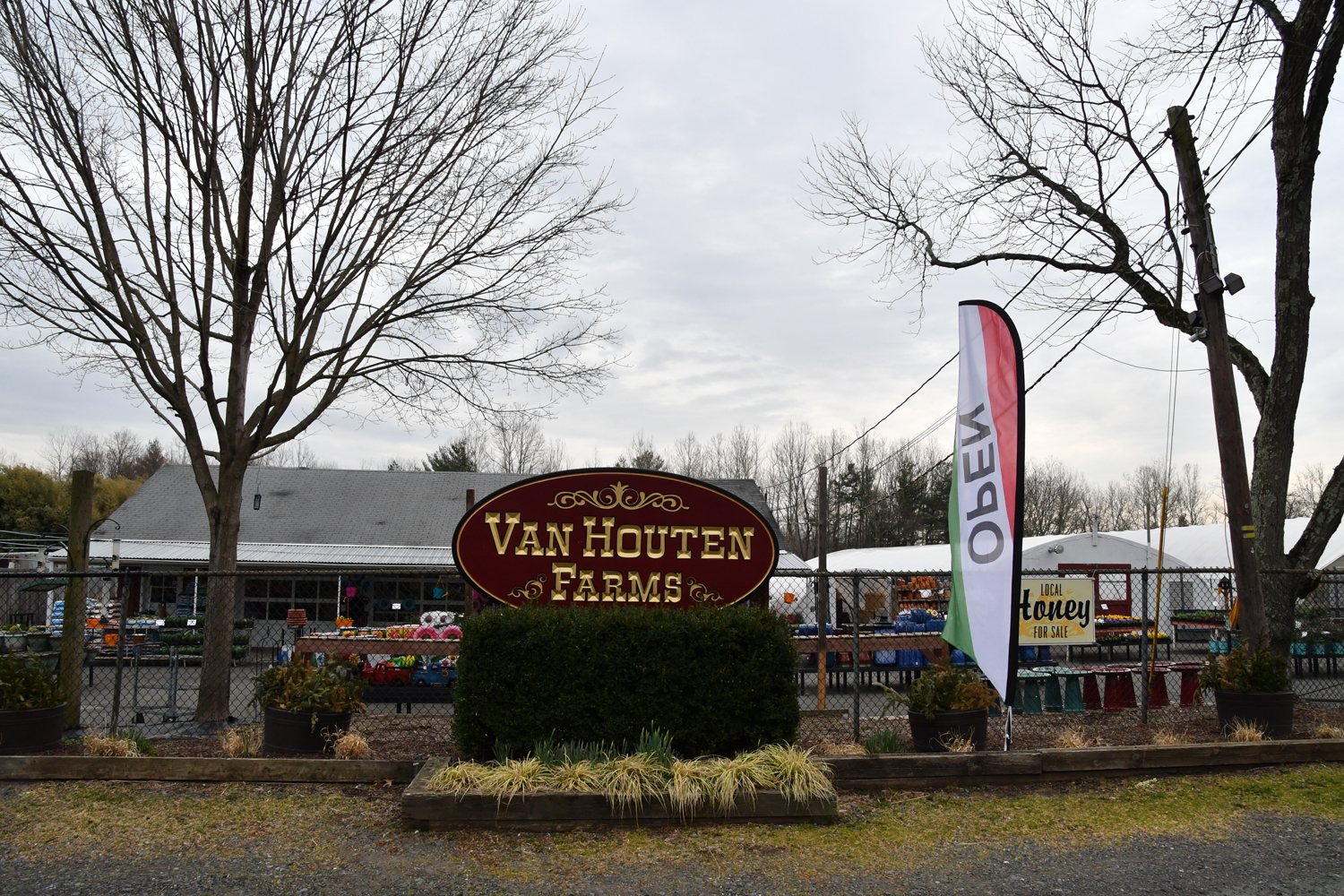 At last Jim took charge and brought the Mack over to the Van Houten Farm Nursery and produce retail site. On staff Jim recalls a young employee adept at all things mechanical. Jim set him loose on the truck and recalls saying, “He got the darn thing running. I actually drove it around the neighborhood.” Being late in the season, the truck went behind the farm stand for the winter. Jim recalls saying, “With winter coming the mechanic drained everything.” Jim then winces saying, “At least we thought he did. It did not drain completely.” When spring came a big crack had developed at the bottom of the radiator. Jim says, “I do not believe the engine suffered any damage.”
At last Jim took charge and brought the Mack over to the Van Houten Farm Nursery and produce retail site. On staff Jim recalls a young employee adept at all things mechanical. Jim set him loose on the truck and recalls saying, “He got the darn thing running. I actually drove it around the neighborhood.” Being late in the season, the truck went behind the farm stand for the winter. Jim recalls saying, “With winter coming the mechanic drained everything.” Jim then winces saying, “At least we thought he did. It did not drain completely.” When spring came a big crack had developed at the bottom of the radiator. Jim says, “I do not believe the engine suffered any damage.”
Sadly, the truck then sat in back for more years. Finally as the 1970s came to a close Jim had the truck towed to the front of the farm stand to serve as a decoration. It has again performed its designated task without complaint for over 40 years. Jim says, “I feel terrible that I’ve just let it sit there and literally just rust away.” Over the years many people have offered to buy the truck. Jim says, “I feel bad that it has not gone to somebody who could restore it. Even today it is still restorable.”
During the interview Jim has reflected more than once saying, “The chronological clock is ticking.” Much of his considerable remaining energy has been focused on literally saving the Van Houten Farm. That said, his deep affection for his Mack AC tugs at his heart. When asked, “In the best of all possible worlds” what would you want to see happen to the truck? Jim says, “I would love to have it restored on site but this is the real world and I do not have the time.” Considering those limitations, the two real choices would seem to be either give it to someone who would restore it or let it slowly return to the earth on the family farm. When asked which fate would he chose for his beloved Mack AC, Jim pauses. Slowly with a resignation born of decency Jim whispers with an exhale, “Give it away.”
It is said, “If you love something let it go.” Love is a beautiful thing. Clearly, Jim hopes the future will see the same said of his then restored Mack AC.

Love this story and the accompanying photos.
Cmments from such a great car guy and writer are greatly appreciated.